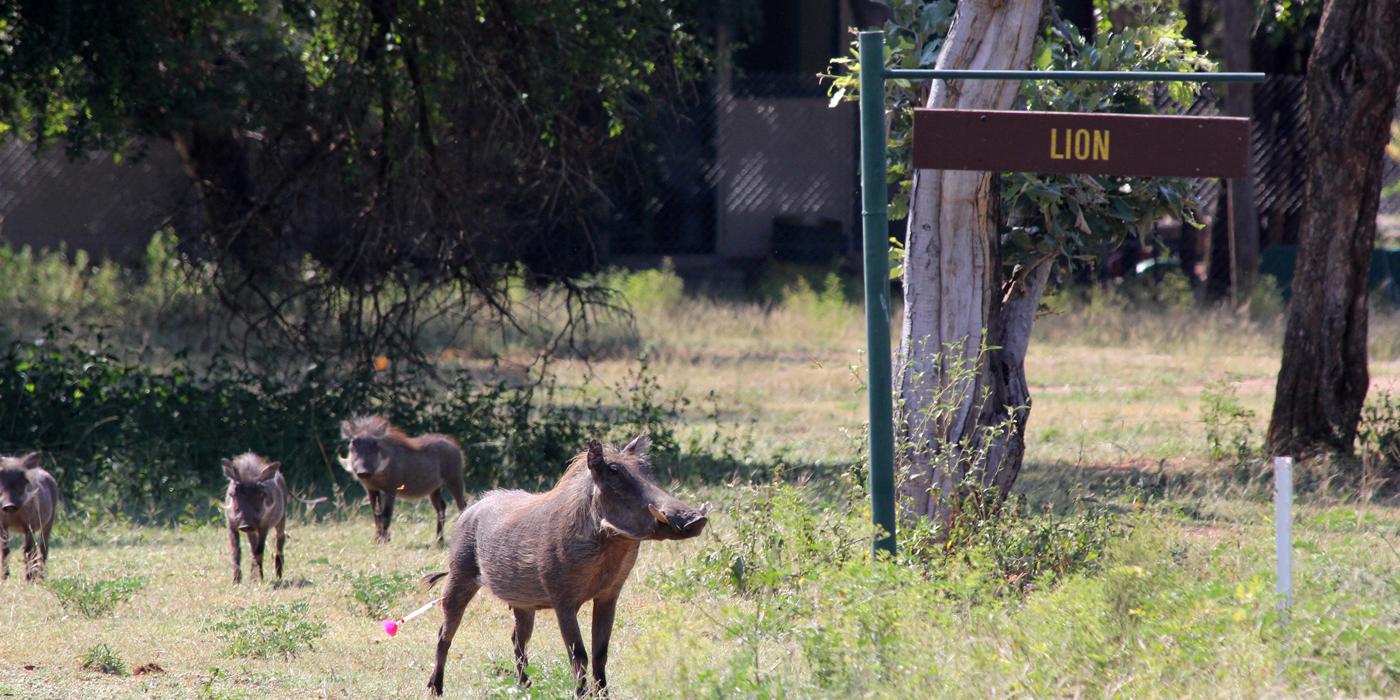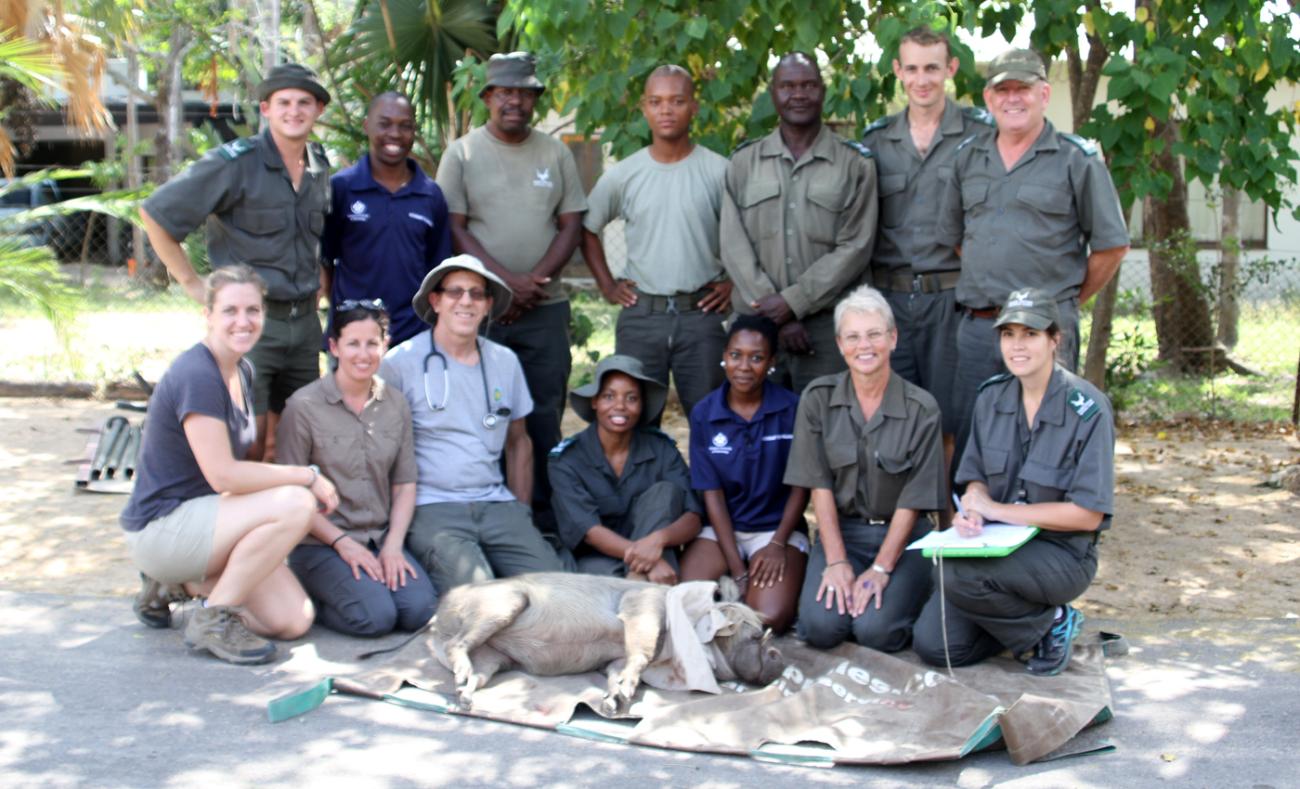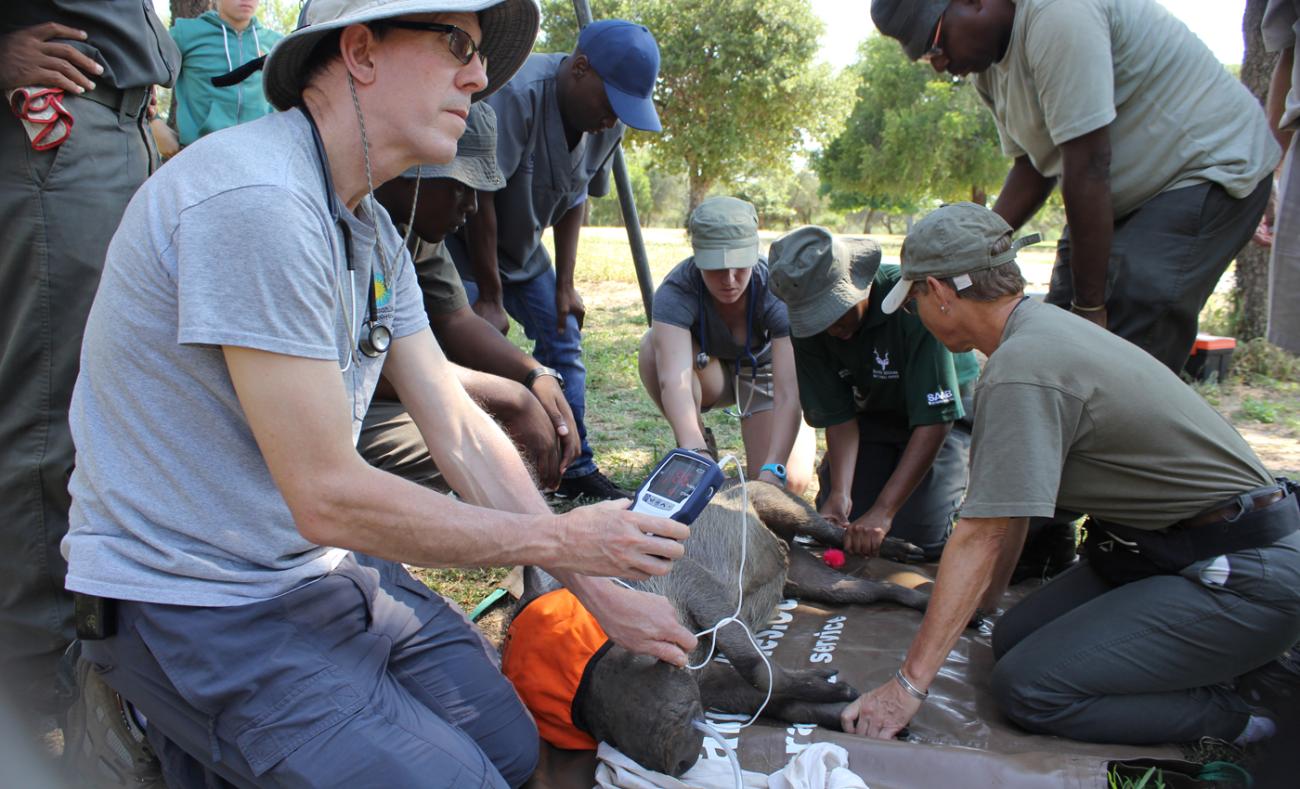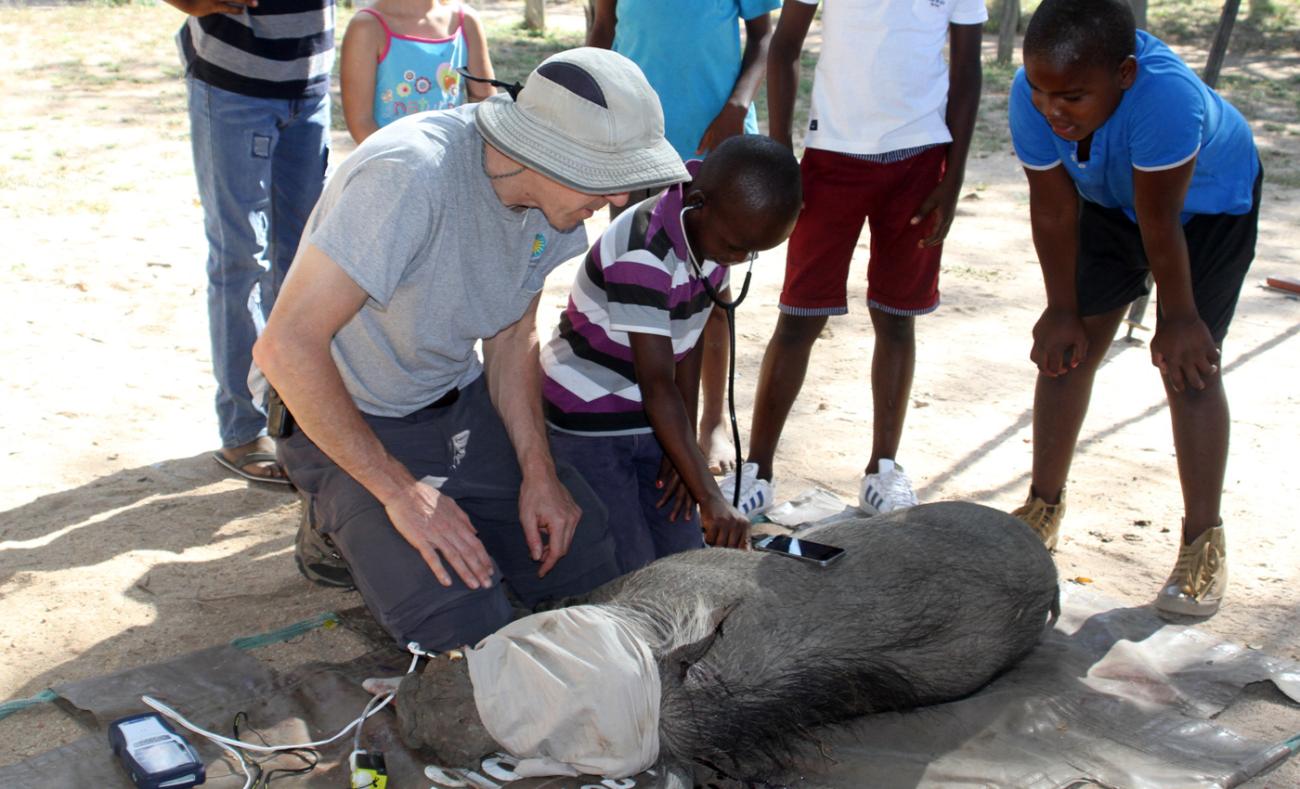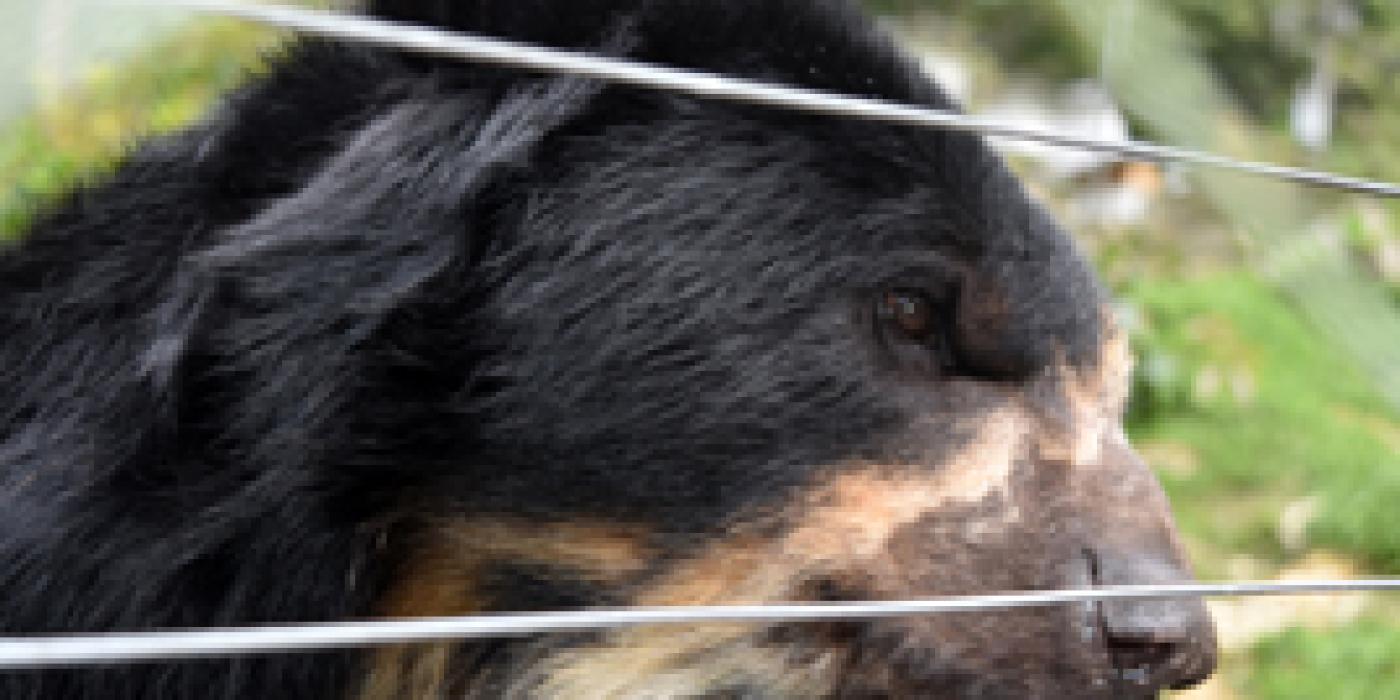The Case of Warthog Disease
Why study warthog health in South Africa?
Humans are putting pressure on wildlife populations by expanding into their native habitats, bringing our livestock and other domestic species with us. When wildlife, domestic species and humans interact more frequently, there is a greater opportunity for disease transmission and outbreaks.
Because of my training and interest in One Health issues, I look for opportunities where I can help colleagues investigate disease transmission affecting animals and their habitats. This past April, I joined colleagues in South Africa’s Kruger National Park to investigate an ancient disease that has the potential to collapse the entire ecosystem: bovine tuberculosis.
One factor in disease outbreaks and transmission is “spillover” species—animals that can move pathogens between natural areas and surrounding human settlements and agricultural areas. Warthogs are one of those species. They’re charismatic and essential to biodiversity in the region, but they also play an important role in disease transmission. They comingle with many other animals; they also regularly breach fences and barriers surrounding wild areas. In fact, they can be found on farms and golf courses, in gardens and trash bins, or in a rest camp where tourists stay.
Any assistance the Smithsonian’s National Zoo can provide—whether it’s technical assistance, helping to diagnose diseases or examine pathology—ultimately adds to the global community’s knowledge about disease and helps inform decisions made by wildlife managers and government agencies in native habitats.
What disease is threatening the well-being of warthogs?
We were looking for evidence of infection with seven pathogens, the main one being bovine tuberculosis, caused by the bacteria Mycobacterium bovis. Tuberculosis is a chronic, progressive and debilitating disease that in many ways mimics cancer by turning on processes that result in muscle wasting and debilitation. For example, an animal with tuberculosis may eat very well and still lose weight and body condition. Some animals also develop difficulty breathing or gastrointestinal disease.
Bovine tuberculosis can be passed from animal to animal by direct contact or through contamination of water supplies and food sources. In Kruger National Park, there is a high prevalence of tuberculosis in buffalo populations, who contaminate the environment through their saliva and nasal secretions. Warthogs drink from the same watering holes and graze the same areas as buffalo. Infected prey—including warthogs—pose a threat to big predators (such as lions) and scavengers (such as lions), who can develop tuberculosis when they consume infected prey. Bovine tuberculosis has invaded all levels of the food chain, prey and predators alike, from the tiny mongoose to the massive African elephant.
For our study, my colleagues from Kruger National Park’s Veterinary Wildlife Services, Stellenbosch University and Colorado State University collected blood samples from 100 individual warthogs. We determined individual prevalence of the seven diseases of concern as well as relatedness between the diseases. This information helps us understand warthogs’ role in the spread of bovine tuberculosis and will assist in the overall tuberculosis control program for the park.Why is it important to understand how disease is spreading?
The concept that we can let nature sort itself out is a fantasy. Because of the ways in which human land use has changed over the years, warthog ranges have expanded. Regionally, though, their populations are in decline. If their main predators decline in Kruger National Park, warthogs may see an initial population spike. Ultimately, collapse of the food chain and competition for resources will have a negative effect on the animals and the ecosystem.
The spread of disease can also have a big impact on South Africa’s ecotourism industry. People travel there to see warthogs and other charismatic species. If the vibrant diversity of nature within the park declines, the park’s attractiveness as a travel destination will also suffer. That is bad news for warthogs and all species living in the park.
Your team also studied the effects of anesthesia on warthogs. What did you find?
In addition to looking at the disease transmission potential of warthogs, this trip gave me an opportunity to study an anesthetic regimen on warthogs. We developed a protocol for our drug “cocktail” that reliably and safely helped the warthogs promptly fall asleep, kept them stable during the procedure and enabled them to recover quickly and completely.
Most importantly, we were able to apply a cost-effective and readily available protocol that our colleagues in Kruger National Park can use and share with wildlife managers and veterinarians in other countries where warthogs live.
What makes you optimistic about this collaboration?
One of the most important aspects of this trip was connecting with colleagues and providing useful research and wildlife management tools to the people “on the ground” in Kruger National Park. We’re already thinking ahead to how the Smithsonian’s National Zoo, Kruger National Park and our partners can work together to help address other wildlife health and disease issues in South Africa.
One of the most meaningful parts of the trip was working in the Kruger National Park staff villages. Many of the folks who work and live in the park have children. We invited them to watch as we worked on the warthogs and gave them a stethoscope so they could listen to the animals’ heartbeats as well as their own. If we positively affected even just one of those children and inspired them to care about these animals or to become a veterinarian or researcher, then that may be the biggest impact these projects made on the future of wildlife in Kruger National Park and areas beyond.
This story appears in the June 2017 issue of National Zoo News.
